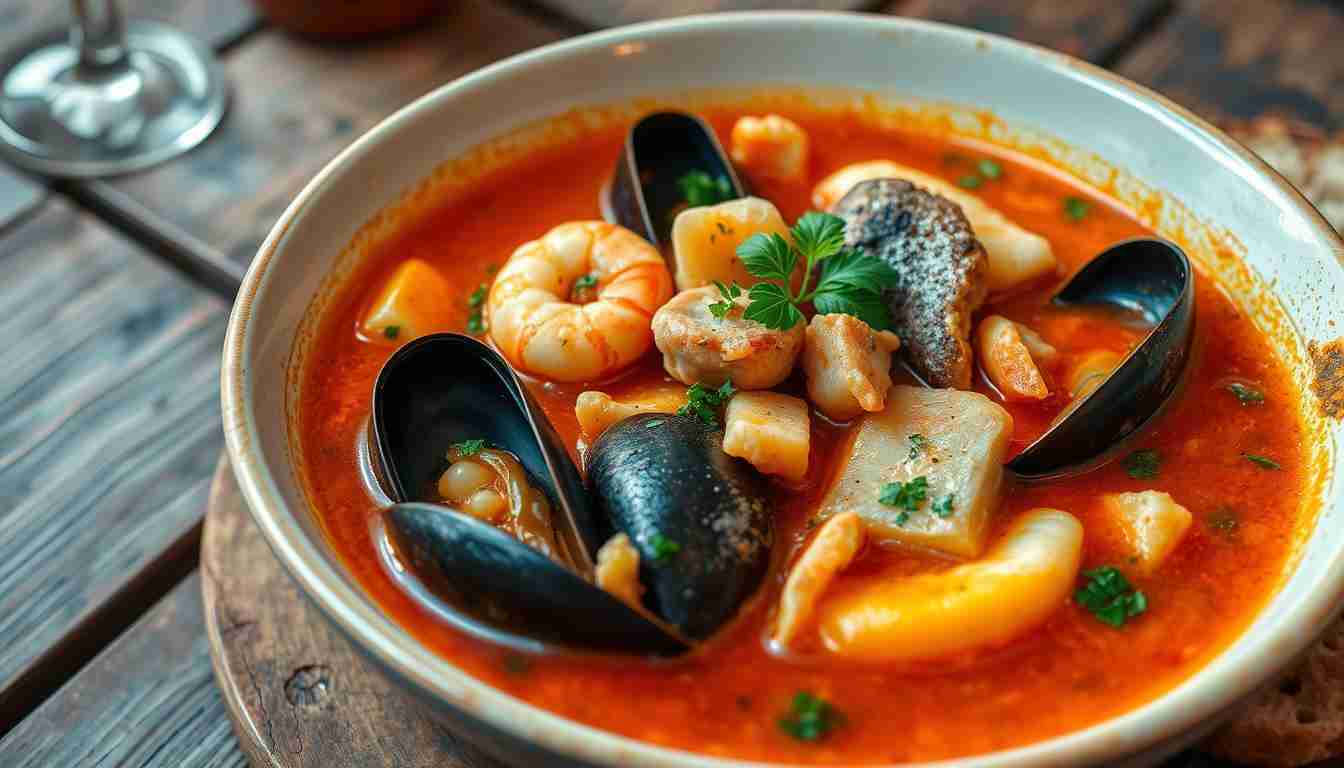

**Classic Cioppino: Italian-American Seafood Stew**
Cioppino is a robust and savory seafood stew that has become a cherished element of Italian-American gastronomy, especially in the San Francisco Bay Area. With roots in Italian immigrant traditions and a connection to the plentiful waters of the Pacific Ocean, cioppino narrates a tale of transformation, community, and culinary innovation.
### History of Cioppino
Cioppino (pronounced “chuh-PEE-no”) has its beginnings in the late 1800s and early 1900s, when Italian fishermen—mainly from the Ligurian region—established their homes in San Francisco’s North Beach area. These newcomers introduced the practice of making seafood stews with the daily catch, frequently blending various fish and shellfish in a tomato-based broth.
The term “cioppino” is thought to derive from the Italian phrase “ciuppin,” a term from the Ligurian dialect meaning “to chop” or “chopped,” alluding to the method of preparing the seafood. An alternative theory proposes that the name originated from fishermen requesting each other to “chip in” some of their catch for a shared stew.
### Components and Cooking Method
Traditional cioppino is a rustic, one-pot creation that highlights the freshness and variety of seafood accessible along the California coastline. Although recipes may differ, a classic cioppino usually contains:
– **Seafood**: A blend of shellfish and fish like Dungeness crab, clams, mussels, shrimp, scallops, squid, and firm white fish such as halibut or cod.
– **Aromatic Foundation**: Onions, garlic, and fennel sautéed in olive oil create the flavor base.
– **Tomatoes and Wine**: Crushed tomatoes along with dry white or red wine form a rich, tangy broth.
– **Herbs and Spices**: Bay leaves, oregano, basil, thyme, and red pepper flakes contribute depth and heat.
– **Broth**: Fish stock or clam juice amplifies the seafood essence.
The stew is generally simmered until the seafood is just cooked, guaranteeing tender textures and robust flavors. It is customarily accompanied by crusty sourdough bread, ideal for absorbing the delectable broth.
### Cultural Importance
Cioppino represents more than just food; it stands as a testament to the Italian-American narrative in California. It exemplifies the ingenuity of immigrant communities that adapted their culinary practices to their new surroundings, employing local ingredients to recreate familiar flavors. Over time, cioppino emerged as a hallmark dish of San Francisco, frequently found in seafood eateries along Fisherman’s Wharf and elsewhere.
The dish is particularly favored during the festive season and is sometimes featured in the Italian-American Feast of the Seven Fishes on Christmas Eve. Its communal nature makes it perfect for social gatherings and celebrations.
### Contemporary Variations
While the traditional recipe remains a classic, modern chefs and home cooks frequently add their unique twist to cioppino. Some alternatives include:
– Incorporating saffron or other spices for a Mediterranean flair.
– Utilizing assorted types of seafood depending on local availability.
– Presenting the stew atop pasta or rice for a more substantial meal.
Regardless of these variations, the essence of cioppino endures: a tribute to the bounty of the sea, shared among loved ones.
### Closing Remarks
Cioppino is an essential Italian-American dish that captures the essence of culinary fusion and community. With its rich heritage, vibrant flavors, and comforting nature, cioppino continues to be a beloved choice for seafood enthusiasts and a proud emblem of San Francisco’s diverse cultural legacy. Whether savored in an upscale restaurant or prepared at home with fresh ingredients, cioppino delivers a delightful taste of tradition.